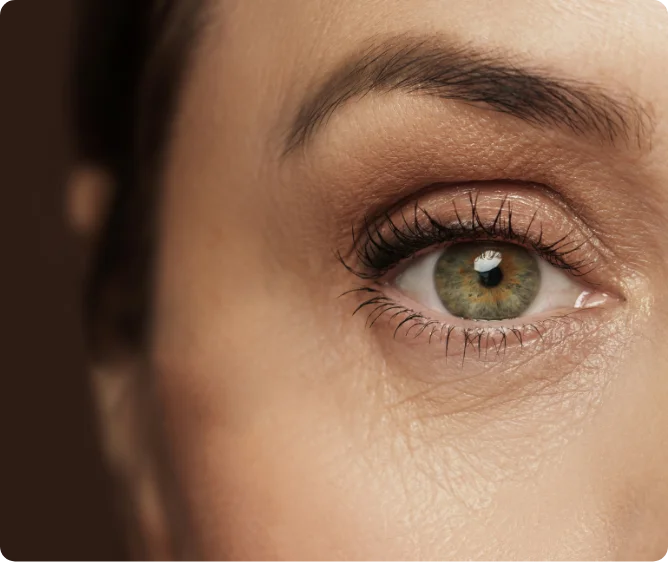Glaucoma
Glaucoma is a group of eye conditions that affect the optic nerve and can cause irreversible vision loss. It tends to cause a gradual loss of peripheral vision which is generally asymptomatic. For this reason, it is often referred to as “the silent thief of sight”. Glaucoma is the second most common cause of blindness worldwide. Given the asymptomatic nature of glaucoma, it is important to have regular comprehensive eye examinations including detailed examination of the optic nerve. In addition to clinically examining the eye and nerve, this often involves an assessment of the thickness of the optic nerve (otherwise known as the peripapillary retinal nerve fibre layer) with ocular coherence tomography (OCT) scans and visual field testing.
Whilst there is no cure for glaucoma, the goal of therapy is to slow the progression of the disease. Current glaucoma treatment involves lowering the intraocular pressure (the pressure inside the eye). There are several ways that this can be achieved – either using topical drops, laser or surgeries. The Ophthalmologists at Rockhampton Eye Clinic are experienced in the assessment and management of glaucoma and will be able to collaborate with you to establish a treatment plan to effectively manage your condition.
Glaucoma may be considered as either ‘open angle’ or ‘closed angle’ glaucoma. The ‘angle’ refers to the anterior chamber angle of the eye which is where the fluid that causes the pressure inside the eye (the aqueous humour) drains. There are several laser treatments that may be recommended for your condition depending on whether you have ‘open angle’ or ‘closed angle’ glaucoma.
Glaucoma Topical Therapy
Topical eye drops remain the most common treatment for glaucoma. There are several different classes of drops available to lower the intraocular pressure. These drops work by either reducing the production of the fluid in the eye (the aqueous humour) or by increasing the flow of that same fluid out of the eye.
Some tips to help ensure your drops work effectively include:
- Regularly taking your drops every day (and at the same time of the day) as instructed
- If you forget to take a dose, apply the missed dose as soon as you remember
- Making sure the drops are instilled in the correct eye
- If using more than one eye drop, making sure you wait three to five minutes between application of the drops
- Ensure you have sufficient drop refills on your prescription (and if you require further prescriptions, please contact the clinic and we can arrange these for you)
Glaucoma Laser Procedures
Selective Laser Trabeculoplasty
Selective laser trabeculoplasty (SLT) is one way in which we can achieve a lower intraocular pressure. It achieves this by increasing the amount of fluid which drains from inside the eye via the anterior chamber angle.
Laser Peripheral Iridotomy
Laser peripheral iridotomy is indicated in patients with closed anterior chamber angles. This procedure involves delivering laser energy to create a small hole in the peripheral iris (the coloured part of the eye). This improves the circulation of the fluid inside the front of the eye (the aqueous humour) and prevents it from building up behind the iris which may obstruct the anterior chamber angle and cause an increase in the pressure inside the eye. This process may occur gradually or sometimes suddenly, the latter of which can cause the pressure to suddenly escalate – this is known as an acute angle closure – and can cause significant damage to the optic nerve and loss of vision.
Glaucoma Surgeries
Minimally Invasive Glaucoma Surgeries (MIGS)
An important recent development in glaucoma care has been the advent of Minimally Invasive Glaucoma Surgeries (MIGS). MIGS is an umbrella term used to describe a range of surgical glaucoma procedures that have the benefit of lowering the pressure with a faster recovery and generally a more favourable risk profile than the traditional glaucoma surgeries. MIGS procedures available at Rockhampton Eye Clinic include:
- iStent
- Hydrus
- Gonioscopy Assisted Transluminal Trabeculotomy (GATT)
- PRESERFLO MicroShunt

Trabeculectomy
Trabeculectomy is one of the oldest and remains one of the most effective, glaucoma surgeries for lowering the intraocular pressure. Trabeculectomy is indicated when other glaucoma treatments have been exhausted, or are poorly tolerated, and there is progression of the disease.
Glaucoma Drainage Device
Glaucoma drainage devices are another type of glaucoma filtration surgery (along with the trabeculectomy surgery). These devices provide a conduit for fluid to flow out of the eye and thereby lower the intraocular pressure. A glaucoma drainage device is indicated when topical glaucoma therapies, laser or other surgical techniques have become insufficient to control the intraocular pressure. Glaucoma drainage devices that Dr Hogden commonly uses include: the Baerveldt tube, Paul glaucoma tube and Ahmed tube.
This is general information only. Prior to any procedure the Ophthalmologists at Rockhampton Eye Clinic will have a comprehensive discussion with you regarding the specific benefits and risks of the procedure as well as after care needs. If you have concerns after any procedure performed such as reduced vision or eye pain please contact our clinic to arrange review or alternatively visit your nearest Emergency Department.
Better Vision Starts Here
Our mission is to preserve and enhance your vision with expert care, advanced technology and a deep commitment to your quality of life.


